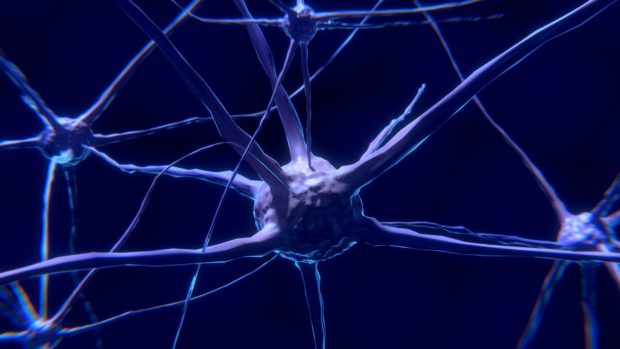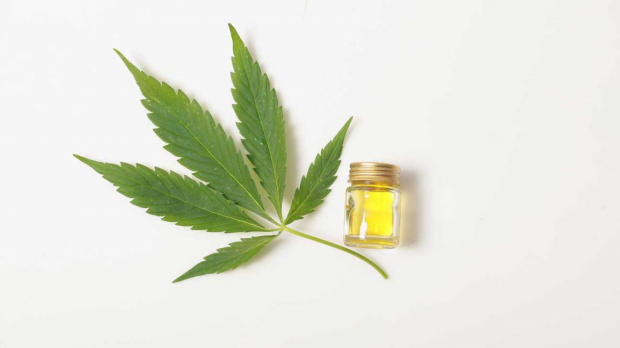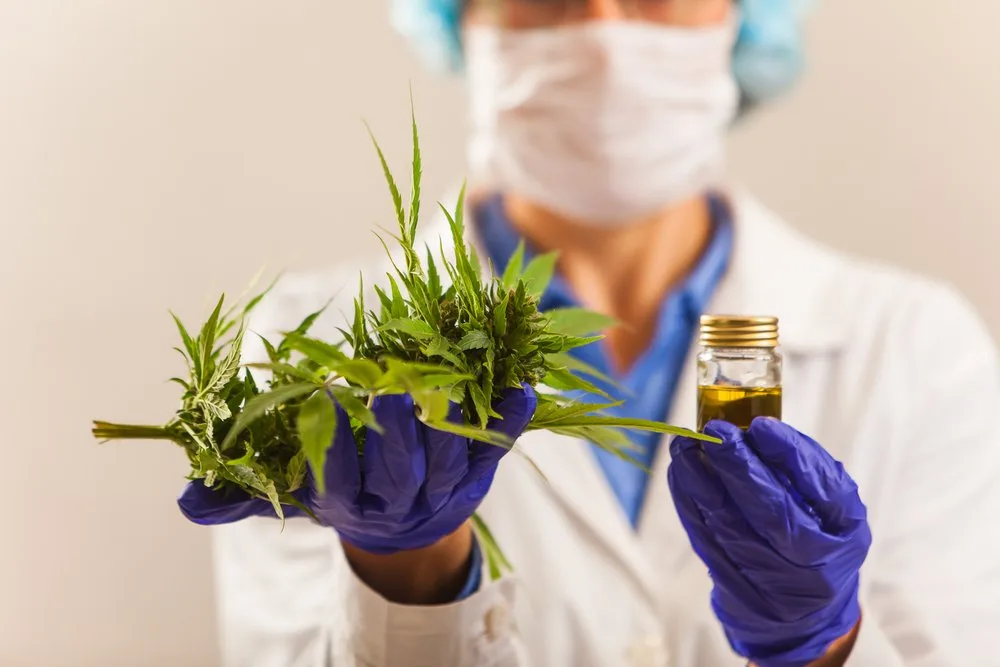The word on everybody’s lips is cannabis and generating interest has less to do with its euphoric effects and more with how it provides medicinal and health benefits for the body. In an effort to better understand the secrets behind cannabis’ health effects on the body, scientists soon discovered that the key to this lies in the body’s incredibly vital endocannabinoid system (ECS).
The endocannabinoid system is not just the catalyst behind the benefits of cannabis but it’s also responsible for ensuring that the body constantly maintains homeostasis at a cellular level. Sound complicated? Let’s break it down.
What exactly is the endocannabinoid system?
The endocannabinoid system is a system within the body that works to maintain homeostasis. It is a relatively new system as it was only discovered in 1988. Homeostasis is essentially the human body’s way of keeping its internal environment stable and balanced in order to ensure optimum performance.
The endocannabinoid system helps to regulate a lot of the body’s important functions, such as:
- Appetite
- Cardiovascular health
- Digestion

- Eye health
- Immune system
- Inflammation
- Pain
- Pleasure/reward
- Memory
- Mental health
- Mood
- Motor control
- Reproduction/fertility
- Sleep
- Skin health
- Temperature regulation
Here are three key aspects of the endocannabinoid system:
- Endocannabinoids
- Cannabinoid receptors
- Metabolic enzymes
Endocannabinoids
Cannabinoids are a class of chemical compounds that act on cannabinoid receptors in the body. The most popular are CBD and THC. The cannabis plant houses both of these cannabinoids. CBD is mostly associated with the plant’s health benefits where THC is credited for its euphoric effects on the brain. Cannabinoids found in plants are referred to as phytocannabinoids – this is what CBD and THC are. Other phytocannabinoids found in the cannabis plant that are receiving attention are CBN (cannabinol), CBG (cannabigerol) and CBC (cannabichromene).
In 1992, a team of researchers discovered that the human body makes its own cannabinoids, called endocannabinoids. Found throughout the body, endocannabinoids’ one goal is to help the body maintain homeostasis.
The two main endocannabinoids are anandamide and 2-Arachidonoylglycerol (2-AG). They bind to and activate cannabinoid receptors.
Cannabinoid receptors
In 1988, a team of researchers discovered the first cannabinoid receptor in the brain of a rat. They found it concentrated in parts of the brain responsible for mental and physiological processes. This receptor became to be known as CB1. Moreover, the group noted that the receptor interacted with the cannabis compound, THC (1). Five years later, a second cannabinoid receptor (later known as CB2) was identified and it exhibited the same reaction to THC as the first receptor. In 1995, these receptors were found in humans.
Cannabinoid receptors are found on the surface of the body’s cells. These receptors listen and wait for the cannabinoids to bind and activate them. Once that happens, the receptors signal the endocannabinoid system to help the body maintain homeostasis. CB1 and CB2 are the two major cannabinoid receptors.
CB1 receptors can be found in the central nervous system. They are the captors that THC interacts with. They also interact with other neurotransmitters that include serotonin. CB2 receptors are primarily found in the gut, immune cells, and the peripheral nervous system.
How does CBD interact with these receptors?
According to a study published in the journal Cerebrum, CBD enhances the capabilities of CB1 and CB2 receptors once it bonds to them.

If one is using cannabis for recreational purposes, the THC from the cannabis will attach to the CB1 receptor and this will create a euphoric high synonymous with cannabis use. Once THC is attached to the CB1 receptor, an endocannabinoid called anandamide attaches itself to the same receptor.
Metabolic enzymes
Metabolic enzymes are enzymes in the body. They ensure that endocannabinoids are appropriately used and destroyed once they are no longer needed.
The two big enzymes are FAAH, which breaks down anandamide, and MAGL, which breaks down 2-AG. Unfortunately, these enzymes THC as fast as it does the endocannabinoids and this is why THC has such a profound effect on the human body.
An interesting fact about CBD is that it stops the FAAH enzyme from breaking down anandamide, so the anandamide can have more of an impact on the brain. Thus, this may be why the benefits of CBD include helping to alleviate symptoms of anxiety (2).
Endocannabinoid Deficiency
A healthy endocannabinoid system serves to maintain homeostasis in the body. Any imbalance is sure to cause some form of health issue.
Researchers have termed low endocannabinoid levels as clinical endocannabinoid deficiency (CECD). According to their research, CECD may be linked to autism, depression, multiple sclerosis, migraines, fibromyalgia, irritable bowel syndrome, sleep disorders, and Parkinson’s.
If you’re going to restore homeostasis within the body, you must first find out what’s causing the imbalance in the first place.
According to emerging studies, factors that can increase the risk of an endocannabinoid system imbalance include:
- alcohol and drug abuse
- chronic stress, and
- a diet rich in sugar and processed fats.
Supporting A Healthy Endocannabinoid System
A human body that has an endocannabinoid system that interacts well with endocannabinoids is an incredibly healthy body. It’s clear that if you want to improve your overall health, it’s important to support your endocannabinoid system.
Whilst various studies have highlighted CBD’s ability to do this quite effectively, there are other measures one can take to support its endocannabinoid system.
1. Add omega-3’s to your diet
Omega fatty acids are essential for healthy fats. Unfortunately, the body cannot produce on its own so one need’s to consume it through foods or dietary supplements.
 Endocannabinoids are produced by arachidonic acid, which is an omega-6 fatty acid (3). However, it’s important to maintain a healthy ratio of omega-3 and omega-6 fatty acids in the body if you want to aid the endocannabinoid system. High levels of arachidonic acid can not only inhibit cannabinoid receptors but can also increase inflammation. Additionally, a study published in the journal Nature Neuroscience found an association between a low intake of omega-3 fatty acids and poor endocannabinoid function.
Endocannabinoids are produced by arachidonic acid, which is an omega-6 fatty acid (3). However, it’s important to maintain a healthy ratio of omega-3 and omega-6 fatty acids in the body if you want to aid the endocannabinoid system. High levels of arachidonic acid can not only inhibit cannabinoid receptors but can also increase inflammation. Additionally, a study published in the journal Nature Neuroscience found an association between a low intake of omega-3 fatty acids and poor endocannabinoid function.
So what can you eat to ensure a healthy ratio of omega-3 and omega-6 fatty acids in the body? Firstly, one should ensure that their diet isn’t rich in too many omega-6 foods as this can cause inflammation. As we know, high levels of inflammation can raise the risk of inflammatory diseases such as Type II diabetes and inflammatory bowel syndrome. That said, it’s important to balance your intake of omega-3 and omega-6 fatty acids. This can be done by consuming foods such as hemp seeds, flax seeds, walnuts, sardines, krill oil supplements, and pasture-fed eggs.
2. Avoid blockers
As previously mentioned, there are factors that can increase the risk of an endocannabinoid system imbalance. These blockers include phthalates and pesticides.
Phthalates are compounds that are regularly added to plastic containers and bottles in order to increase their flexibility, longevity, and durability. Unfortunately, these compounds can hinder the endocannabinoid system thus it’s best to avoid them by opting for glass or stainless steel containers (4).
One should also stay clear of pesticides as, in addition to their various detrimental health effects, these substances can also inhibit the endocannabinoid system so try to choose organic whenever you can.
3. Drink a cup of tea
Tea is rich in catechins, which are antioxidant compounds. The most popular catechin is Epigallocatechin gallate (EGCG) which is quite potent in green tea.
According to a study published in the journal Phytomedicine, the catechins found in tea help enhance the endocannabinoid system by binding to the CB1 receptors found in the central nervous system.
4. Embrace the cold
You may want to start your day with a cold shower.
Two separate studies discovered that exposure to the cold helped stimulate the endocannabinoid system by increasing the density of CB1 neurons (5,6).
5. Enjoy dark chocolate
Still feeling guilty about treating yourself to some organic dark chocolate? There’s no need to be. Not only can dark chocolate provide a variety of health benefits, but it can also support the endocannabinoid system.
Dark chocolate contains a high ratio of cacao powder. The flavonoids found in cacao powder help stimulate the endocannabinoid system. How do they do this? Well, according to the journal Nature, flavonoids inhibit the breakdown of the body’s own endocannabinoids. Moreover, dark chocolate also contains the endocannabinoid anandamide.
6. Exercise 
Listen, if you want to maintain optimum health, then you need to be adopting some form of an active lifestyle.
Athletes and avid runners have often spoken about the runner’s high that they experience after a good run. Whilst many credit this euphoric feeling to your body pumping out endorphins, other researchers believe that it’s really the result of a spike in endocannabinoids in your system.
So what effect does an active lifestyle have on the endocannabinoid system? According to studies, exercising can boost levels of anandamide and it also increases the CB1 receptor sensitivity (7,8).
7. Have an orgasm
According to a 2017 study published in the Journal of Sexual Medicine, reaching orgasm through masturbation increases the levels of the endocannabinoid, 2-AG. Whilst studies are in their infancy, many believe that 2-AG is mostly associated with the brain, thus it may be more involved in the pleasure aspect.
8. More probiotics
Gut health is integral to overall health, thus it is likely that it can also influence the endocannabinoid system. If you’re looking to support your gut health, then probiotics are the way to go.
Lactobacillus acidophilus is a probiotic found in probiotic-rich foods and available in supplement form. According to one study, lactobacillus acidophilus helped to induce a CB2 receptor (9).
9. Practice stress-relieving activities
Stress is an aspect of our lives that we cannot accept and it’s something that we all have to deal with now and then. However, chronic stress means elevated levels of the stress hormone, cortisol and this can jeopardize our health. Additionally, high levels of cortisol may also compromise the endocannabinoid system.
According to a study published in the Archives of General Psychiatry, elevated levels of cortisol can suppress CB1 receptors and this can then weaken the endocannabinoid system.
If you want to manage your stress levels, try meditation or tai chi, listen to some music or, if you can, go out and get a massage.
10. Soak up the sun
Taking a stroll in the park won’t only bring you closer to nature, but it’ll also boost your vitamin D levels and enhance your endocannabinoid system.
According to experts, spending 15 minutes in the sun daily, whilst wearing sunscreen, encourages nitric oxide activity in the body and this, in turn, boosts levels of 2-AG and also enhances CB1 receptors (9).
11. Try Cannabidiol (CBD) oil
As previously mentioned, cannabidiol (CBD) is a phytocannabinoid found in cannabis. Unlike THC, CBD has no psychoactive effect but rather, a wide range of potential medical benefits.

According to various bodies of research, CBD maintains the functionality of the endocannabinoid system by ensuring that CB1 is harder to activate and over-activate (10). Furthermore, CBD also helps prevent the breakdown of the endocannabinoids found in the body.
Unfortunately, the legalities surrounding CBD oil purchase and application in the United States (and indeed in other countries) are still muddled by a lot of grey area thus, it’s important that you do your research and fact-check before making your purchase of CBD oil.
12. Use some echinacea
Echinacea is a herb, available in supplement form, that’s native to Native America that’s been used to alleviate symptoms associated with flu and the common cold.
The herb not only contains phytocannabinoids, but it also provides the body with a dose of alkylamides. According to a study published in the Journal of Biological Chemistry, alkylamides not only increase the effects of endocannabinoids but when they bind to the CB2 receptor, they help to reduce inflammation.
The Bottom Line
Maintaining homeostasis is the key to optimal, long-term functionality of your body. That said, the endocannabinoid system is still, in a sense, somewhat of a mystery and researchers are still learning more about it every day. However, whilst they do, you can do your best to ensure homeostasis by adopting the above practices and supporting the important endocannabinoids system.






![women [longevity live]](https://longevitylive.com/wp-content/uploads/2020/01/photo-of-women-walking-down-the-street-1116984-100x100.jpg)









